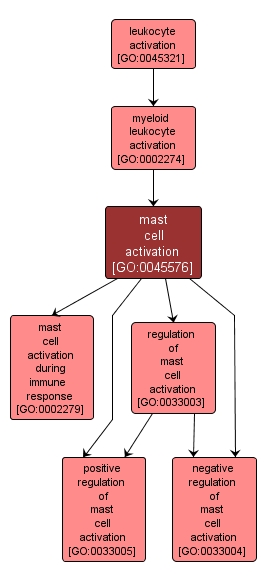GO TERM SUMMARY
|
| Name: |
mast cell activation |
| Acc: |
GO:0045576 |
| Aspect: |
Biological Process |
| Desc: |
The change in morphology and behavior of a mast cell resulting from exposure to a cytokine, chemokine, soluble factor, or to (at least in mammals) an antigen which the mast cell has specifically bound via IgE bound to Fc-epsilonRI receptors. |
|

|
INTERACTIVE GO GRAPH
|














